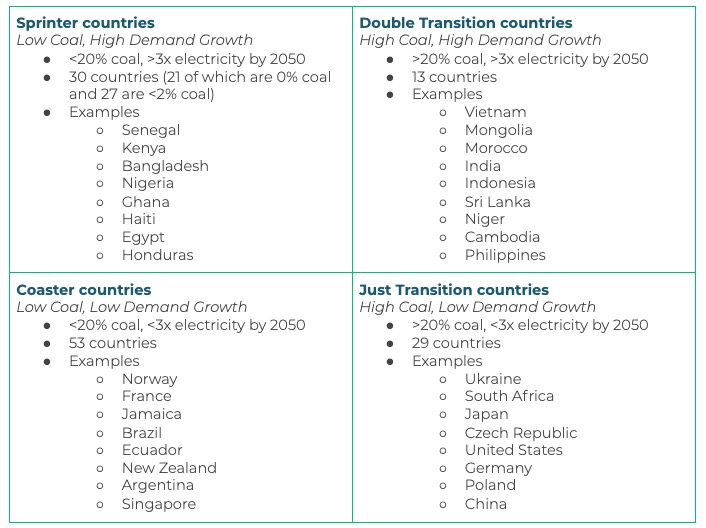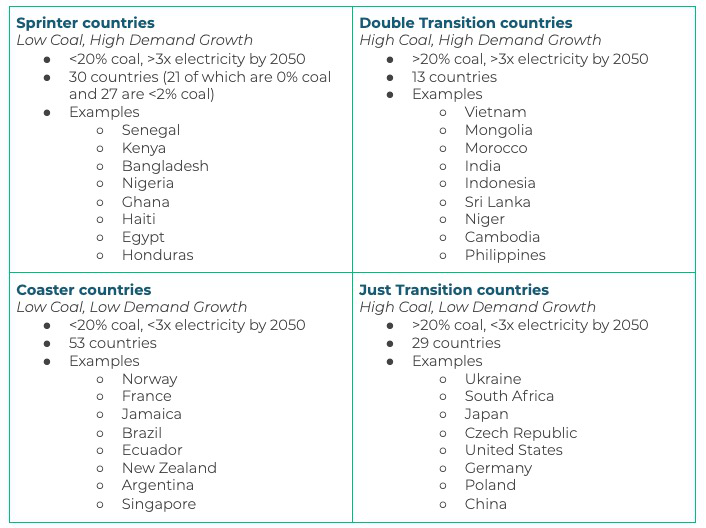The term ‘developing countries’ has become passé, but it’s especially outdated for thinking about energy and climate. Grouping incredibly diverse societies together can be misleading, a problem that has struck me lately in reading about the energy transition and the frequent implicit or explicit use of South Africa and/or India as stand-ins for other countries across Asia, Africa, or Latin America.
India obviously looms very large because of its scale, but is it really indicative of the economic development and energy transition issues faced by other countries? What about South Africa? Many countries are facing the dual challenge of (a) urgently providing infrastructure to enable job growth and higher incomes and also (b) managing decarbonization. In some markets, the ‘just transition’ aims to squeeze out the most polluting sources of energy without hurting people and communities. But where are these challenges most pressing and relevant?
To think about this, I constructed a simple 2×2 breakdown of coal use and projected change in electricity demand, using (admittedly arbitrary) thresholds of 20% coal in the current electricity generation mix and a tripling of electricity demand by 2050. These are crude proxies for countries facing (or not) the dual challenges of rapid development and decarbonization.
Of the 125 countries with data, here’s how they cluster.

Sources: World Bank, Coal data for 2015; electricity projections from the Mapping Global Market for Advanced Nuclear.
The implications for the country groups seem to me:
- Double Transition countries must focus on two mega challenges at once. These countries face the most daunting path of building infrastructure ASAP to meet steeply rising demand while at the same time achieving a Just Transition by managing the social and economic effects of decarbonization.
- Just Transition countries can mostly focus on that one (decarbonization) challenge. These countries must find fair outcomes for those dislocated by shifting away from coal or consumers burdened with higher costs. They need to modernize infrastructure, but it’s far less urgent.
- Sprinter countries can mostly focus on that one (growth) challenge. The priority for these countries is to find fair outcomes for those living without sufficient energy, infrastructure, and jobs. They need to watch their eventual carbon footprint, but it’s far less urgent.
- Coaster countries are mostly in a good starting place. They should still squeeze out emissions where they can.
My big takeaway is, obviously, that not all countries face the same development and climate challenges, so they need not follow the same path. We should stop misguidedly aggregating countries. Even within Africa, South Africa is far more like Poland than Kenya or Senegal.

